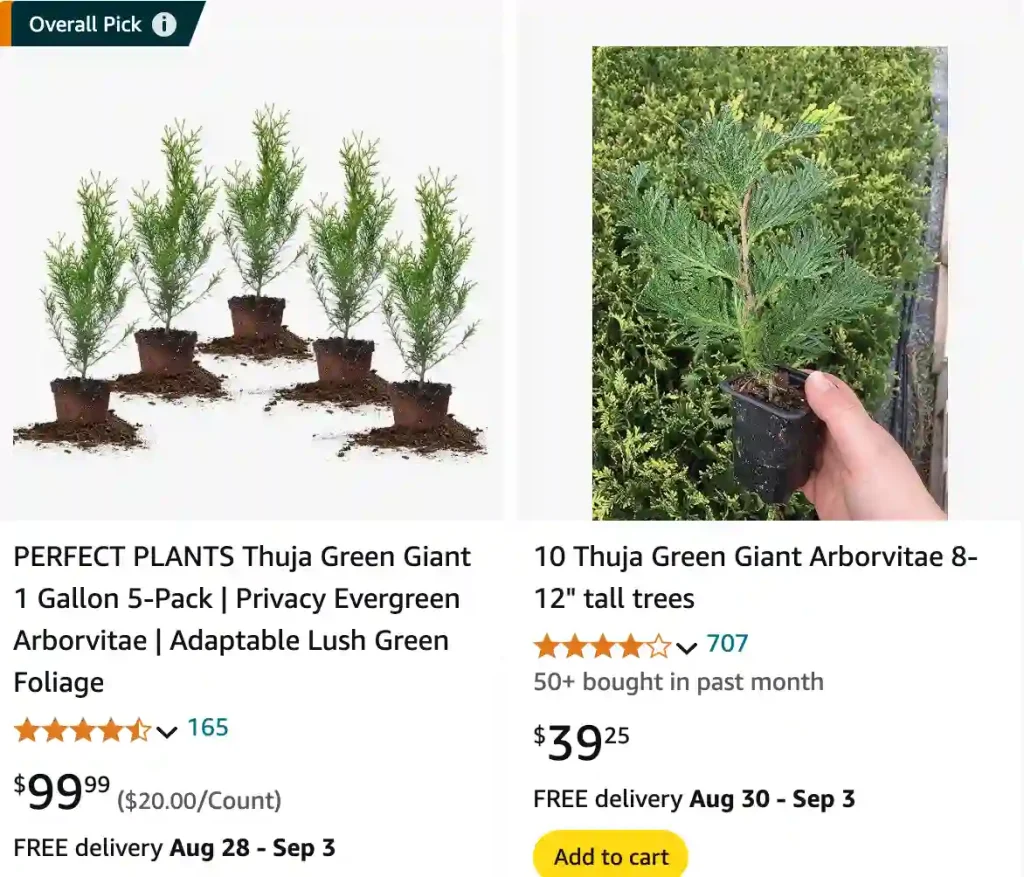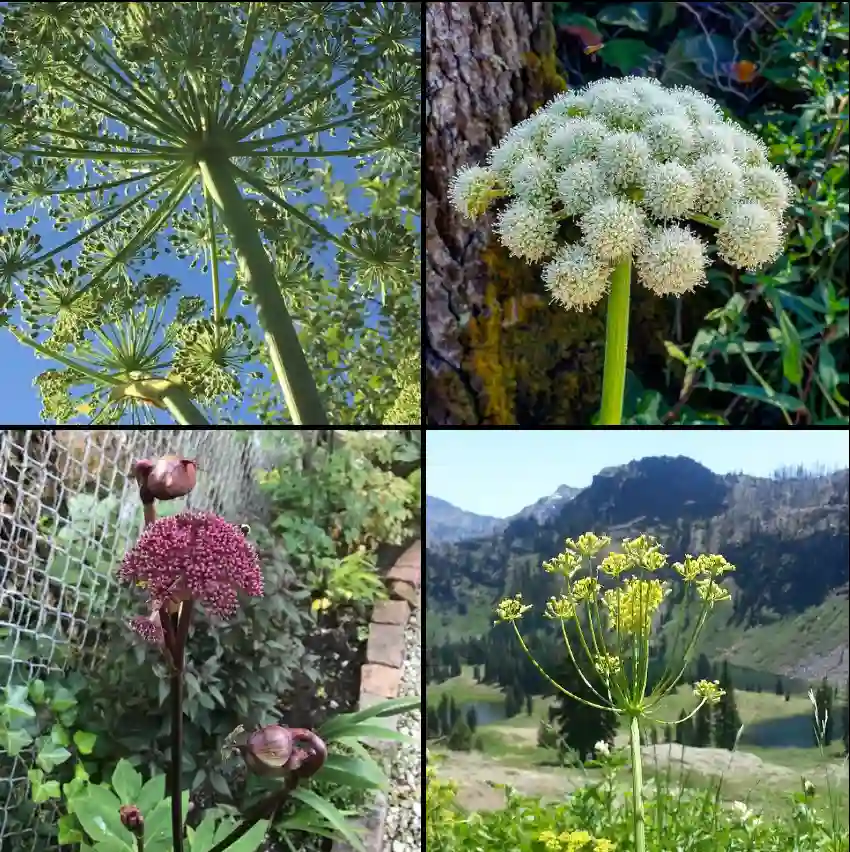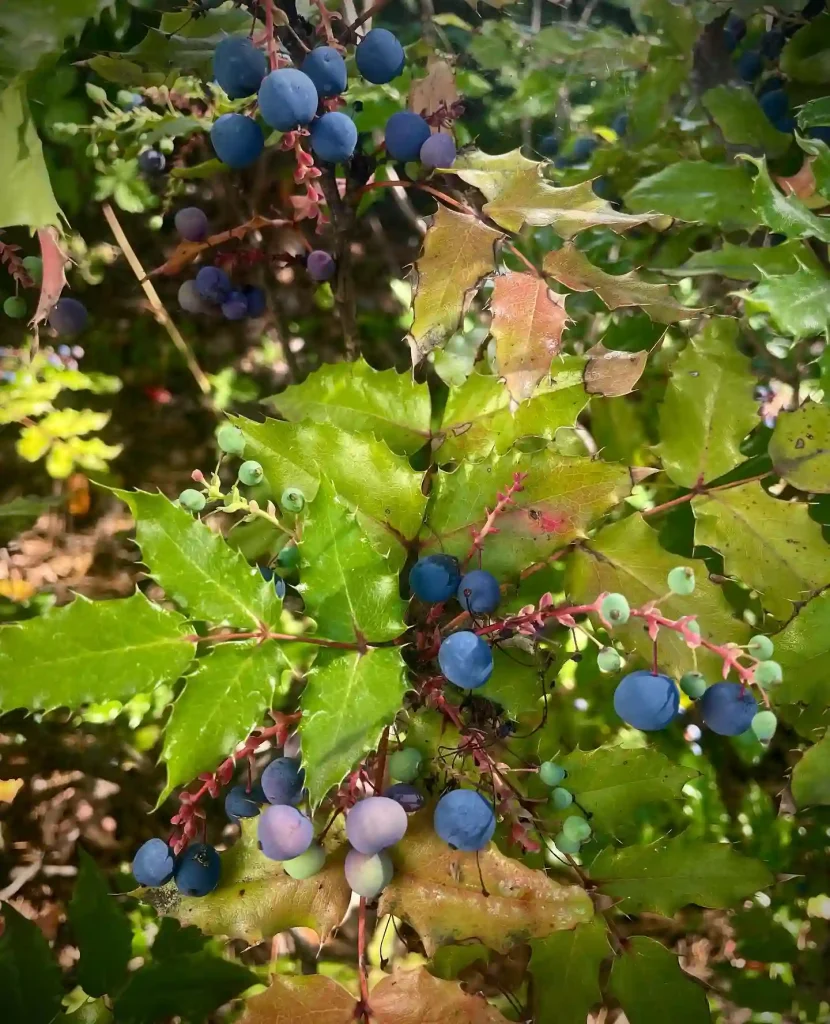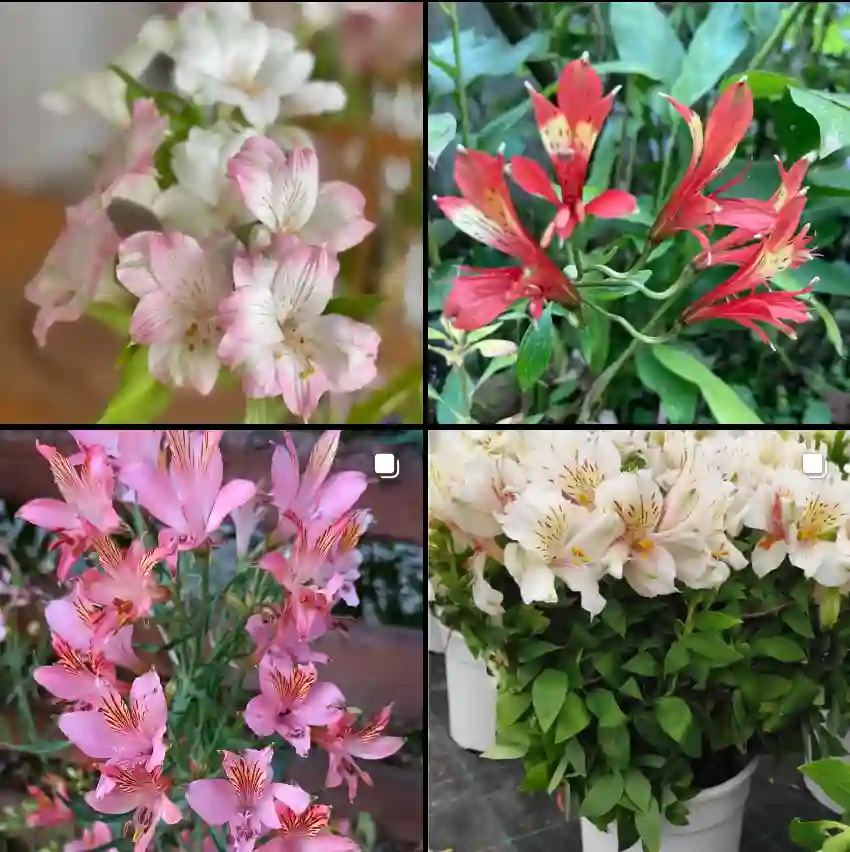
FAQs About Thuja Green Giant: Your Ultimate Guide
I’ve been working with Thuja Green Giant for a few years now, and I’ve seen a lot of questions pop up about this fantastic evergreen. If you’re considering adding this fast-growing shrub to your garden, you probably have some questions. Let’s dive into the most frequently asked questions about Thuja Green Giant and provide some practical insights.
5 Species in Genus Thuja
How Far Apart to Plant Thuja Green Giant?
When planting Thuja Green Giant, spacing is crucial to ensure healthy growth. Typically, you should plant them 5 to 8 feet apart. This spacing allows them to grow into their full potential without overcrowding. If you’re aiming for a dense privacy screen, closer spacing can be used, but 5 feet is usually ideal for a well-balanced hedge.
When to Plant Thuja Green Giant?
The best time to plant Thuja Green Giant is during the spring or fall. These seasons provide optimal growing conditions. Planting in spring allows the tree to establish its roots before the summer heat. Fall planting gives the tree time to settle in before the winter freeze. Avoid planting in extreme heat or cold to ensure the best results.
How Fast Do Thuja Green Giants Grow?
Thuja Green Giant is known for its impressive growth rate. Under ideal conditions, it can grow 3 to 5 feet per year. This rapid growth makes it a popular choice for creating privacy screens or hedges quickly. However, growth can be slower in less-than-ideal soil or climate conditions.
How to Plant Thuja Green Giant?
To plant Thuja Green Giant, follow these steps:
- Choose a Location: Pick a spot with well-drained soil and full sun to partial shade.
- Prepare the Soil: Amend the soil with compost if needed to ensure good drainage.
- Dig the Hole: Make the hole twice as wide and as deep as the root ball.
- Plant the Tree: Place the tree in the hole, making sure the top of the root ball is level with the soil surface.
- Backfill and Water: Fill in the hole with soil, firming it gently around the root ball. Water thoroughly.
Do Deer Eat Thuja Green Giant?
Deer are known for their voracious appetites, but Thuja Green Giant is somewhat deer-resistant. While they might nibble on young plants, mature trees are less appealing to deer. Using deer repellents or fencing can provide extra protection if deer are a significant concern in your area.
Are Thuja Green Giant Deer Resistant?
Yes, Thuja Green Giant is generally considered deer-resistant. Its dense foliage and strong scent make it less attractive to deer compared to other plants. However, in times of food scarcity, even deer-resistant plants might be targeted.
How Often to Water Thuja Green Giant?
Thuja Green Giant requires regular watering, especially during its first year after planting. Water deeply once a week, ensuring the soil is moist but not waterlogged. Once established, it can tolerate periods of drought better, but regular watering will promote the best growth.
How to Prune Thuja Green Giant?
Pruning Thuja Green Giant is straightforward. For a formal hedge, prune in late winter or early spring before new growth starts. Remove any dead or damaged branches and trim the sides to maintain shape. Avoid heavy pruning, as this can damage the plant and inhibit growth.
How Wide Do Thuja Green Giants Get?
Thuja Green Giant typically grows to a width of 10 to 15 feet. This width can vary depending on growing conditions and pruning practices. For a narrow hedge, regular trimming will help maintain a slimmer profile.
Can You Plant Thuja Green Giant in Winter?
Planting Thuja Green Giant in winter is possible but not ideal. The cold temperatures can stress the plant and hinder root establishment. If you must plant in winter, ensure the ground is not frozen, and provide extra care to protect the young plants from harsh conditions.
Where to Buy Thuja Green Giant?
You can buy Thuja Green Giant at most garden centers, nurseries, or online retailers. When purchasing, look for reputable sources that offer healthy, well-rooted plants. Online plant retailers often have a wide selection and can deliver directly to your home.
Thuja Green Giant vs Leyland Cypress
Thuja Green Giant and Leyland Cypress are both popular for privacy screens, but they have differences. Thuja Green Giant grows faster and is more resistant to disease and pests compared to Leyland Cypress. Leyland Cypress tends to be more susceptible to fungal issues and requires more maintenance.
Thuja Green Giant vs Emerald
Thuja Green Giant and Emerald are both arborvitae varieties, but they differ in size and growth rate. Thuja Green Giant grows larger and faster, making it ideal for privacy screens and large hedges. Emerald, on the other hand, is smaller and more suitable for compact spaces and formal hedges.
Thuja Green Giant vs Emerald Green
Emerald Green is a smaller, more compact version of the Thuja Green Giant. It is slower growing and maintains a narrower profile, making it perfect for smaller gardens or as a decorative hedge. Thuja Green Giant is more suited for larger spaces due to its size and growth rate.
Thuja Green Giant vs Arborvitae
Thuja Green Giant is a type of Arborvitae, but not all Arborvitae are Green Giants. While Thuja Green Giant is known for its fast growth and large size, other Arborvitae varieties like Emerald Green are smaller and slower-growing. The choice depends on your space and landscaping needs.
Thuja Green Giant vs American Pillar
American Pillar is another tall, narrow evergreen, but it has a more columnar shape compared to the broader Thuja Green Giant. While both are used for privacy screens, American Pillar grows more slowly and has a more formal appearance.
Thuja Green Giant vs Green Giant Arborvitae
“Green Giant Arborvitae” is another name for Thuja Green Giant. They are the same plant, known for their fast growth and robust size. The term “Green Giant Arborvitae” simply emphasizes its identity as an Arborvitae variety.
What is Thuja Green Giant?
Thuja Green Giant is a fast-growing evergreen tree known for its dense, green foliage and large size. It is commonly used for creating privacy screens, windbreaks, and hedges due to its impressive growth rate and adaptability.
How to Care for Thuja Green Giant?
Caring for Thuja Green Giant involves regular watering, occasional pruning, and ensuring it has enough sunlight. Make sure the soil is well-drained and provide supplemental watering during dry periods. Regularly check for pests and diseases to keep the tree healthy.
How to Propagate Thuja Green Giant?
Propagation of Thuja Green Giant is typically done through cuttings. Take a semi-hardwood cutting in late summer or early fall, and root it in a mixture of peat and perlite. Ensure the cutting stays moist and warm until roots develop.
What to Plant With Thuja Green Giant?
Thuja Green Giant pairs well with a variety of plants. Consider planting flowering shrubs, perennials, or groundcovers that complement its green foliage. For a layered effect, combine it with ornamental grasses or flowering plants to add color and texture.
Is It Toxic?
Thuja Green Giant is not considered toxic to humans or pets. However, it’s always a good idea to keep any plant material out of reach of children and pets to prevent accidental ingestion.
Benefits
Thuja Green Giant offers numerous benefits. It provides excellent privacy, serves as a windbreak, and adds year-round greenery to your landscape. Its fast growth and low maintenance requirements make it a popular choice for many gardeners.
Common Problems
Common problems with Thuja Green Giant include browning of foliage, pest infestations, and fungal diseases. Ensure proper spacing, avoid overhead watering, and regularly inspect the trees for signs of trouble. Addressing these issues early can prevent major problems.
Compare With Other Similar Plants
Comparing Thuja Green Giant with other evergreen options like Leyland Cypress, Emerald Green, or Arborvitae can help you make an informed choice. Consider factors like growth rate, size, disease resistance, and maintenance needs to find the best fit for your garden.
If you’re thinking about incorporating Thuja Green Giant into your landscape, understanding these aspects will help you make the most of this versatile and attractive plant. Happy gardening!
If i die, water my plants!



